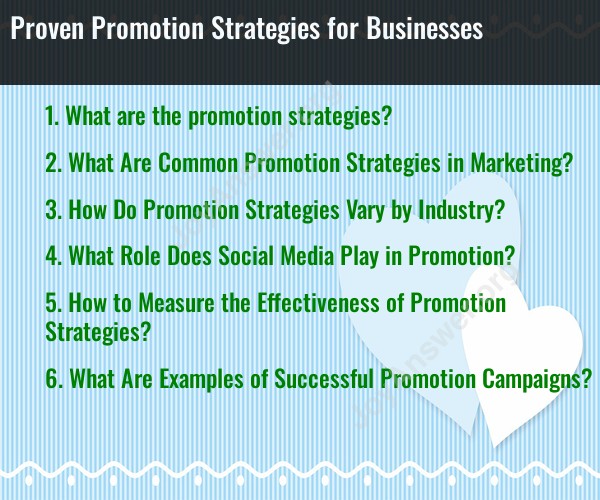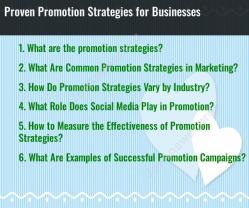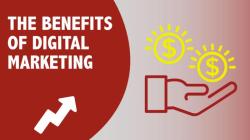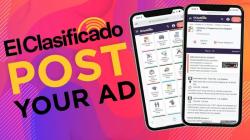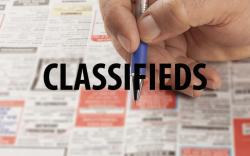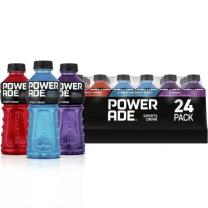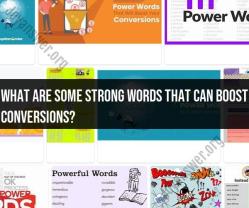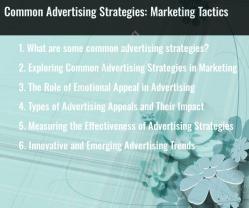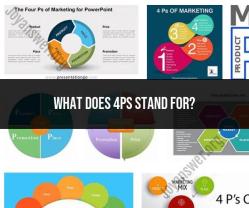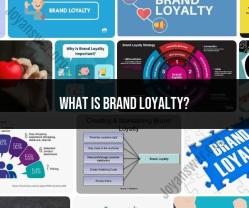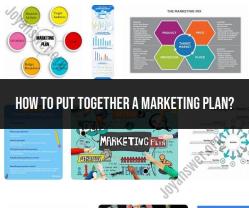What are the promotion strategies?
Promotion strategies are the ways businesses spread the word about their products or services, attract attention, and persuade people to buy. They usually combine marketing, communication, and customer relationship tactics.
Here’s a breakdown of proven promotion strategies that work across many industries:
1. Advertising
Paid methods to reach a wide audience.
Examples: Google Ads, Facebook/Instagram ads, YouTube video ads, radio, TV, print.
Why it works: Lets you target specific demographics and measure results.
2. Sales Promotions
Short-term incentives to encourage immediate purchases.
Examples: Discounts, “Buy One Get One Free,” flash sales, coupons, bundle deals.
Why it works: Creates urgency and boosts short-term sales.
3. Public Relations (PR)
Gaining attention through news or public interest stories.
Examples: Press releases, media coverage, sponsorships, charity involvement.
Why it works: Builds credibility and trust without direct selling.
4. Content Marketing
Attracting customers through valuable, relevant content.
Examples: Blog posts, videos, podcasts, infographics, ebooks.
Why it works: Positions you as an expert and nurtures long-term relationships.
5. Social Media Marketing
Engaging directly with your audience on platforms they already use.
Examples: TikTok trends, Instagram Reels, LinkedIn articles, X (Twitter) threads.
Why it works: Builds brand personality and encourages word-of-mouth sharing.
6. Email Marketing
Sending targeted messages directly to people’s inboxes.
Examples: Newsletters, product updates, special offers, loyalty rewards.
Why it works: Highly personal, cost-effective, and measurable.
7. Influencer & Affiliate Marketing
Partnering with people who already have your target audience’s trust.
Examples: Influencer reviews, affiliate programs with commissions.
Why it works: Leverages someone else’s credibility to drive sales.
8. Events & Experiences
Creating opportunities for customers to connect with your brand in person or online.
Examples: Trade shows, webinars, workshops, pop-up shops.
Why it works: Builds memorable, personal connections.
9. Referral Programs
Rewarding customers for bringing in new ones.
Examples: “Give $10, Get $10” offers, loyalty points for referrals.
Why it works: Encourages happy customers to do your marketing for you.
10. Partnerships & Cross-Promotions
Collaborating with other businesses to reach new audiences.
Examples: Co-branded products, bundled offers, guest blogging.
Why it works: Expands reach without doubling your marketing spend.
Here’s a Promotion Strategy Mix Template you can adapt for any business.
It’s designed so you’re hitting customers from multiple angles (awareness → engagement → conversion) within 30 days.
Promotion Strategy Mix Template (30-Day Plan)
1. Define Your Goals & Audience
Goal: _________________________ (e.g., increase sales by 15%, get 500 new leads)
Target Audience: _________________________ (e.g., women 25–40, fitness enthusiasts)
Budget: _________________________
2. Choose Your Strategy Mix
Pick 3–5 methods from the list below to balance reach, engagement, and sales:
| Strategy Type | Tactic Example | Purpose |
|---|---|---|
| Advertising | Facebook ads targeting your audience | Quick reach + brand awareness |
| Sales Promotions | 10% off for new customers | Drive immediate sales |
| Content Marketing | 2 blog posts/week + short social videos | Build authority + SEO |
| Social Media | Daily Instagram Reels & Stories | Engage and grow followers |
| Email Marketing | Weekly newsletter with offers | Nurture and retain customers |
| Referral Program | “Invite a friend” bonus | Word-of-mouth growth |
3. 30-Day Action Plan
| Week | Main Focus | Actions | Goal |
|---|---|---|---|
| Week 1 | Awareness & Visibility | - Launch ad campaign - Publish intro video - Announce promotion on social media | Reach 5,000 people |
| Week 2 | Engagement & Trust | - Publish 2 blog posts - Post behind-the-scenes on Instagram - Start email welcome series | Gain 200 engaged followers |
| Week 3 | Conversion Push | - Send “limited time” offer email - Run flash sale on social media - Partner with 1 influencer | Make 50 sales |
| Week 4 | Retention & Referrals | - Launch referral bonus - Send thank-you discount code - Post customer testimonials | Get 20 referrals |
4. Measurement & Review
At the end of 30 days:
Ad performance: _________________________
Social engagement: _________________________
Sales increase: _________________________
Lessons learned: _________________________
Pro Tip: Keep the core message consistent across all channels — customers should recognize the same tone, colors, and promise whether they see your ad, email, or Instagram post.
Marketing promotion is the set of activities a company uses to communicate the value of its products or services to customers. These strategies are crucial for raising brand awareness, generating sales, and building customer loyalty.
What Are Common Promotion Strategies in Marketing?
Common promotion strategies are often categorized into traditional and digital methods.
Traditional Marketing: This includes methods that have been used for decades, such as print advertisements (newspapers and magazines), television and radio commercials, billboards, and direct mail.
Digital Marketing: These strategies leverage online platforms and technologies.
Examples include social media marketing, content marketing (blog posts, videos, etc.), email marketing, search engine optimization (SEO), and pay-per-click (PPC) advertising. Sales Promotions: These are short-term tactics to stimulate demand, such as discounts, coupons, buy-one-get-one (BOGO) deals, and loyalty programs.
Public Relations (PR): This involves managing a company's public image through press releases, media appearances, and corporate social responsibility campaigns to build a positive brand reputation.
Personal Selling: This is a face-to-face interaction between a salesperson and a customer, which is particularly effective for high-ticket items or B2B sales.
Event Marketing: Hosting or participating in events like trade shows, product launches, or webinars allows a company to connect with customers in an immersive way.
How Do Promotion Strategies Vary by Industry?
Promotion strategies are not one-size-fits-all; they are tailored to fit the specific industry, target audience, and business goals.
Healthcare: While digital marketing is growing, traditional methods like television and print ads are still highly effective for educating people on new treatments and raising awareness, as they can reach a broad, often older, demographic.
Real Estate: This industry relies heavily on digital marketing. Virtual tours, high-quality images, and social media ads are used to showcase properties, and SEO helps listings appear higher in search results.
Technology: Brand marketing and public relations are essential.
Tech companies like Apple and Amazon focus on building a strong brand identity and reputation for innovation to stand out in a competitive market. Entertainment: Public relations is a cornerstone of this industry.
Strategies like press releases, red-carpet events, and media interviews are used to generate buzz and promote artists, movies, and music.
What Role Does Social Media Play in Promotion?
Social media plays a vital role in modern promotion by providing a cost-effective way to reach a large and diverse audience.
Building Brand Awareness: Consistent posting of valuable and relevant content helps establish a brand's identity and voice.
Customer Engagement: Social media allows businesses to interact with customers in real-time, responding to comments and messages, and building a sense of community.
Driving Traffic and Sales: Businesses can use social media to drive traffic to their websites or product pages through links and targeted ads, which can lead to increased conversions and revenue.
Gaining Customer Insights: Monitoring social media conversations helps companies understand customer pain points and industry trends, allowing them to tailor their products and services accordingly.
How to Measure the Effectiveness of Promotion Strategies?
Measuring the effectiveness of promotion strategies is crucial for understanding what works and for optimizing future campaigns.
Return on Investment (ROI): This is a fundamental metric that measures the financial return generated by a campaign relative to its cost.
Conversion Rate: The percentage of people who take a desired action, such as making a purchase or signing up for a newsletter, after being exposed to a promotion.
Customer Acquisition Cost (CAC): The total cost of a promotion divided by the number of new customers acquired.
A lower CAC indicates a more efficient campaign. Engagement Metrics: For digital and social media campaigns, metrics like likes, shares, comments, and click-through rates (CTR) can indicate how well your content is resonating with your audience.
What Are Examples of Successful Promotion Campaigns?
Successful promotion campaigns are often creative, memorable, and deeply resonate with their target audience.
Coca-Cola's "Share a Coke": This campaign replaced the brand logo on bottles with popular names, encouraging people to find their own name or a friend's and share the experience.
It was a simple yet effective way to create a personal connection and increase sales. Nike's "Just Do It": Launched in 1988, this campaign transcended a simple slogan to become a powerful brand identity.
It focused on inspiring both elite athletes and everyday people to push their limits, positioning Nike as a brand of empowerment rather than just a shoe company. Dove's "Real Beauty": This campaign challenged conventional beauty standards by featuring real women of various shapes and sizes in their advertisements.
It built brand loyalty by promoting a powerful and authentic message that resonated with a broad audience, and helped to redefine what beauty means in the media.
